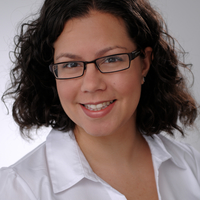
Nicole Taylor
Post-doctoral researcher ("Transformation and crisis in prehistoric and archaic societies") at the Graduate School "Human Development in Landscapes"/the Johanna-Mestorf-Academy.
Previously Lecturer for Prehistory at the Institut für Ur- und Frühgeschichte, CAU Kiel.
PhD project, dealing with identity in LBA cremation cemeteries in C. and S. Germany was carried out as part of the EC Marie Curie FP7 "Forging Identities" Project.
Alumna of the Institute of Archaeology, University College London (graduated 2008).
Alumna of the Department of Archaeology and Jesus College, University of Cambridge (matriculated 2003).
Supervisors: Professor Johannes Müller
Address: Raum 143
Institut für Ur- und Frühgeschichte
Johanna-Mestorf-Str. 2-6
24118 Kiel
Deutschland
Previously Lecturer for Prehistory at the Institut für Ur- und Frühgeschichte, CAU Kiel.
PhD project, dealing with identity in LBA cremation cemeteries in C. and S. Germany was carried out as part of the EC Marie Curie FP7 "Forging Identities" Project.
Alumna of the Institute of Archaeology, University College London (graduated 2008).
Alumna of the Department of Archaeology and Jesus College, University of Cambridge (matriculated 2003).
Supervisors: Professor Johannes Müller
Address: Raum 143
Institut für Ur- und Frühgeschichte
Johanna-Mestorf-Str. 2-6
24118 Kiel
Deutschland
less
InterestsView All (19)
Uploads
Papers by Nicole Taylor
The Kakucs-Turján archaeological site was investigated by a Polish-Hungarian-German research team of archaeologists and various specialists. This volume contains the rst, preliminary results of their work, giving the reader an insight into the complex history of the Bronze Age settlement and its economic activities as reeected in the multi-layered stratigraphy of the site. The currently analysed materials from Kakucs-Turján may help to indicate the basic parameters of the development and functioning of the Middle Bronze Age Vatya culture; on the one hand strongly based on local tradition, on the other contextualized within a wider network covering the Carpathian Basin.
The Kakucs-Turján archaeological site was investigated by a Polish-Hungarian-German research team of archaeologists and various specialists. This volume contains the rst, preliminary results of their work, giving the reader an insight into the complex history of the Bronze Age settlement and its economic activities as reeected in the multi-layered stratigraphy of the site. The currently analysed materials from Kakucs-Turján may help to indicate the basic parameters of the development and functioning of the Middle Bronze Age Vatya culture; on the one hand strongly based on local tradition, on the other contextualized within a wider network covering the Carpathian Basin.
The Kakucs-Turján archaeological site was investigated by a Polish-Hungarian-German research team of archaeologists and various specialists. This volume contains the rst, preliminary results of their work, giving the reader an insight into the complex history of the Bronze Age settlement and its economic activities as reeected in the multi-layered stratigraphy of the site. The currently analysed materials from Kakucs-Turján may help to indicate the basic parameters of the development and functioning of the Middle Bronze Age Vatya culture; on the one hand strongly based on local tradition, on the other contextualized within a wider network covering the Carpathian Basin.
The Kakucs-Turján archaeological site was investigated by a Polish-Hungarian-German research team of archaeologists and various specialists. This volume contains the rst, preliminary results of their work, giving the reader an insight into the complex history of the Bronze Age settlement and its economic activities as reeected in the multi-layered stratigraphy of the site. The currently analysed materials from Kakucs-Turján may help to indicate the basic parameters of the development and functioning of the Middle Bronze Age Vatya culture; on the one hand strongly based on local tradition, on the other contextualized within a wider network covering the Carpathian Basin.
Recent research into emotion, understandings of the body, and processes of identification and categorisation in various social disciplines (including archaeology) suggest a need to marry a recognition that prehistoric worldviews likely varied greatly from our own with an understanding that discarding all aspects of our own experience and modern understanding may be leading us to create one-dimensional narratives about past identities. We need not break and discard our mirrors; we should instead remember that despite being distorted images, reflections can still be useful.
Identität und Mobilität sind zentrale Themen in der Erforschung der Bronzezeit, da in dieser Periode überregionale Netzwerke deutlich zunahmen. Im Gegensatz zu vielen großräumig angelegten Forschungsprojekte, die sich diesen Phänomene ebenfalls widmen, werden in dem vorliegenden Band Identitäten auf lokale Ebene untersucht; wobei der Fokus darauf liegt, wie Identitäten innerhalb einzelnen Gräberfelder konstruiert waren und welche Rolle Mobilität bei der Auswahl der Bestattungsform und Grabbeigaben gespielt haben könnte. Brandbestattungen als Datenquelle werden meist wenig Beachtung gezollt, daher wurde hier ein Ansatz spezifisch für Brandgräberfelder, mithilfe diverse soziale Theorien und naturwissenschaftliche Methoden, entwickelt. Die Ergebnisse aus der Anwendung dieses Ansatzes auf zwei Fallstudien (Vollmarshausen (Hessen) und Künzing (Niederbayern)) ermöglichen neue Einblicke in spätbronzezeitliche Identitäten, wie sie konstruiert und innerhalb der Gesellschaft etabliert wurden, sowie das soziale Umfeld in denen sie relevant waren.
Existent research has shown that there are not only new developments during these periods in metalworking, social structure, production, nutrition and diet, but also the networks in Europe were intensified and human impact on the environment changed in character. What influence do these changes have on human daily life? In order to investigate living conditions we need to gain knowledge about hygiene, health, diet, waste and water management and their interrelation with different environmental settings.
Which proxies can be used to study such topics? We invite contributions from the fields of material culture, physical anthropology, aDNA, archaeobotany (including NPPs and phytoliths), archaeozoology, soil science, archaeometrics (including XRF and other chemical analyses), palaeoentomology, stable isotopes, and many more.